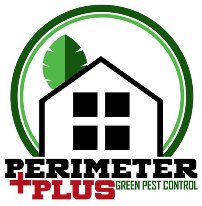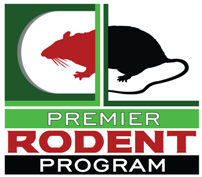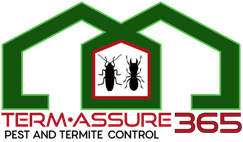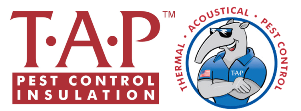Venice
Where History Comes Alive
The story of the Venice we now know started with a long civil battle between two neighboring communities both seeking to retain the same name. One of those communities is now Nokomis. This is the story of the Venice that survived.
Like most of the Gulf Coast of Florida, the earliest people to live and fish along the shores of Venice were the natives – primarily the Calusa and Tacoba tribes. You can still see evidence of their existence and lifestyle all around the area, as well as fossil records that place them in the same time as the woolly mammoth, the giant sloth & the mastodon.
In 1823, Florida became an official state in the United States, but people didn’t permanently venture that far south until the 1860’s. After the Civil War, the newly reunited US passing a homesteading act that provided huge tracts of land for settlers who would manage it. The first two families to take over the area around Shakett’s Creek were the Knights and the Blackburns.
Request a "Quick Quote" to schedule a free inspection!
Just provide a few details and we'll get in touch with you right away!
They were quickly followed by three of the Roberts children, for whom the Bay was eventually named, although Richard Roberts favored the area south of the bay, while Mitch and James would settle in what would later be called Nokomis.
For the next several years, many families would relocate to the area, looking for new opportunities or a brand new start. They slowly spread out across both sides of the Bay.
By 1883, the area was getting a little bit of a reputation, and Frank Higel, a chemist and inventor, came to the area and bought several acres of land from Richard Roberts to launch his new venture. When Higels’ primary investor dropped out, he changed gears and planted hundreds of citrus trees, establishing the area’s first Orange Groves, and helped institute the first post office, in present-day Nokomis.
Believing the area to have a similar look and feel of Venice, Italy, Higel suggested adopting that name for the post office and the town. However the approaching railroad and a deep-pocketed philanthropist were about to change all that.
In 1903, the Seaboard Air Line Railway finished the latest extension of their tracks into Sarasota. Chicago philanthropist, Bertha Honoré Palmer had watched how the railroad helped her husband build his business, as she worked with him behind the scenes. And shortly after his death, she saw the potential of Sarasota area for both a retirement home and a worthy investment.
In 1910, she finalized the purchase of 140,000 acres, south of Roberts Bay, along with negotiating with Seaboard to extend their tracks to her new locale – which she decided to name Venice.
Obscure rules about post office and train station nomenclature led to a 6-year long mostly civil battle between the two bay communities, ending with Palmer’s area retaining the name Venice, while Higel and descendants of the Knight and Blackburn families settled on the name Nokomis.
Unfortunately, the United States entered the War to End All Wars in 1917, which cut the workforce, and Mrs. Palmer died about a year later, her dream of Venice realized in name only.
A land boom in the 1920’s revitalized interest in the Sarasota area at large, and both Venice and Nokomis saw growth. Dr. Fred Albee, an orthopedic surgeon who pioneered bone grafts and had sunk considerable funds into the first luxury hotel in Nokomis, turned his attention across the bay and purchased a large piece of Mrs. Palmer’s land. He hired a famous architect and city planner, John Nolen, to plat out his new city.
Before they could get too deep into the work, however, Albee was given an offer he found too good to pass up to sell the nearly 3000 acres to the Brotherhood of Locomotive Engineers, who wanted to build a railroad retirement community. They retained Nolen as their planner, but restricted him from some of his more ambitious ideas.
In 1926, the first road, Nassau Street, opened to traffic, the Venice Hotel started accepting guests and the first residential housing began to be built. With the tallying of some annexed property, within a year, the population had grown to the point that the town of Venice officially became a city.
Unfortunately, when the stock market crashed, so did the plans of the Brotherhood of Locomotive Engineers. The population plummeted from 3000 to barely more than 300. Instead of a Railroad retirement town, Venice took on a different vision.
Scouts from the Kentucky Military Institute, searching for a new winter campus happened across the near empty city in 1932. The influx of school personnel, cadets and their families breathed new life into the town, and KMI would be an important part of Venice until 1970, when it closed due to growing anti-war sentiment during VietNam.
In May of 1942, more military personnel flooded the town with the establishment of the Venice Army Air Base. Groups of pilots would train in Venice before shifting to either McDill Field in Tampa or Page Field in Fort Myers, to complete their combat training during World War II. More than 20,000 men, including the B-25 pilots who flew bombing raids on Tokyo and their leader Lieutenant Colonel James H. Doolittle, as well as the Tuskegee Airmen all trained in Venice at some point during the war. The field became the Venice Municipal Airport in 1947.
By now, Venice was holding its own, as well as attracting thousands of snowbirds and vacationers who heard about the area from former military and visitors. And in 1960, another group decided to make Venice their winter home.
In 1959, John Ringling North, the heir to the Ringling holdings, sold their property in Sarasota. But thanks to the easy accessibility of the railroad and the year round good weather, the trains of the Ringling Brothers and Barnum and Bailey Circuses, rolled to a stop in Venice and the circus performers and animals paraded through the city to their winter quarters. The tradition would continue every year for decades, and often retired circus folk would settle in the area. In 1992, the trains stopped running to Venice and the circus would relocate to track spurs in remote areas of Sarasota & Charlotte Counties before closing for good in 2017.
Today, Venice values it’s history. The old Triangle Inn hosts the Venice Museum and Archives. The original Venice Train Depot has been restored, and much of the old tracks have been repurposed as The Legacy Trail. The Lord-Higel House has been restored and hosts a museum of the early days of Venice. Around 18,000 people live in the city year round, including descendants of nearly every historical figure mentioned above.
The military and circus industries have been replaced by Tervis Tumblers’ main manufacturing hub, and Higel’s is still a great place to get any and all citrus goods. Considered by many as the “Shark’s Tooth Capital of the World, “Venice also hosts the Shark’s Tooth Festival every year. The Venice Theatre, founded in 1950, is housed inside the old KMI building, is the second largest community theatre in the United States.
The Industry Leader in Green Pest Solutions
Good News leads the industry in providing 100% all natural, safer and more effective botanically-based eco-superior products for pest control. Products that are guaranteed safe for you, your children and your pets. That, coupled with other products that utilize naturally occurring elements found in nature, allows Good News to provide the same pest-free living guarantee, with no risk to your health.
A recent EPA study suggests that 80% of pesticide exposure occurs indoors and that measurable levels of up to a dozen pesticides have been found in the air inside homes!
Perimeter Plus - Green Pest Control
Our Perimeter Plus green pest control is designed to eliminate and prevent most of the creepy-crawly insect varieties we see in Florida, including ants, roaches, silverfish and, of course, spiders. We schedule 3 visits per year to provide exterior service after the initial set-up.
Your Good News technician will inspect the entire exterior of your property while sweeping cobwebs from the eaves and windows.
Once the source of insects is determined, a proper treatment of the perimeter foundation, entry points, eaves, plant beds and trees will be applied where needed using reduced–risk, green products.
If you are having any pest issues inside, your trained tech will also treat any entry points, kitchen, baths, laundry room, or problem areas using reduced–risk or even pesticide exempt products.
We guarantee your satisfaction and will return (at no charge) in between scheduled visits if you encounter any pests. Please call as soon as you see a problem. The sooner we inspect and treat, the better.
Keeping the Rodents in the Fields
One issue we see with rapidly growing and developing areas, is that rats, mice and other rodents find themselves ‘homeless,’ and decide to move in to your home—even in the most exclusive homes and neighborhoods.
The Good News Premier Rodent Program is the most comprehensive service available. We start by excluding all known entry points and sealing roof vents with proprietary covers. Then, we set several traps in the attic(s) to kill any rodents sealed in.
Next, we install 4-6 of the best bait stations available in hidden locations around the exterior perimeter. These help to keep the outside population of rodents to a minimum. We check the traps twice per week until we are sure there are no more live rodents inside.
Finally, we vacuum droppings and apply a deodorizer, sanitizer, viruscide to the entire attic space.
Many of our customers are finalizing the process by capping their insulation with T·A·P: Thermal Acoustical Pest Control. Once T·A·P™ is installed, the attic looks brand new and acts as a deterrent to re-infestation.
Term-Assure 365 - Termite Protection
Our tropical Florida environment means that the state also has the highest risk for termite problems. Termites do more damage than floods, fires and storms combined, and like those natural disasters, the more you prepare the less you feel the impact.
Termite damage isn’t covered by most homeowners policies, which means the repair costs come out of your pocket.
Good News is the leader in using natural and essential oil alternatives to control both drywood and subterranean termite pests.
Term Assure 365 is the most comprehensive and affordable termite protection in the state. First, we perform a thorough inspection of your home to be sure there is no existing evidence of termite infestation.
Next, we perform our initial Perimeter Plus interior and exterior pest control service and install 6-8 termite monitoring stations around the exterior perimeter of your home.
Then every time one of our skilled technicians visits your house (at least once every 4 months), they check the monitoring stations along with the normal treatment. And we offer a $1 million dollar damage repair warranty for homes that qualify.
If you’re building or buying, we offer Bora-Care®, an organic pre-construction treatment, and Florida-mandated real estate WDO inspections, to insure your new home is free of wood destroying organisms.
Don’t wait, schedule your termite inspection now.
T·A·P: Thermal Acoustical Pest Control
With T·A·P, you not only keep out the bugs, but you can save money on your cooling (and heating) bills! Like all our products, TAP is all natural and safe for your family and pets, but is 32% more energy efficient than fiberglass insulation, while adding a sound barrier and even reducing fire hazard.
Quick Facts About Venice:
- Nick Longhi, was drafted out of Venice High School by the Boston Red Sox and now plays for the Cincinnati Reds farm team.
- Marine and Medal of Honor Recipient Hector Cafferata, who distinguished himself in the Korean War spent his final years in Venice.
- Chicago Bears Tight end Trey Burton was born and raised in Venice.
- Dick Hyman, Jazz Pianist for Benny Goodman and Composer for over 20 films, including many directed by Woody Allen, lives in Venice.
- Steve “Rainbow” Trout, who played for both the Chicago White Sox & Cubs, lives and runs an annual Baseball Camp in Venice.
- After retiring from Major League Baseball, Early Wynn, Jr. retired to Venice to open a combination steak house and bowling alley.
Proudly Serving
Sun City Center, Ruskin, Palmetto, Parrish, Ellenton, Bradenton, Anna Maria, Holmes Beach, Bradenton Beach, Longboat Key, Lakewood Ranch, University Park, Myakka City, Sarasota, Siesta Key, Osprey, Nokomis, Casey Key, Venice, Englewood, North Port, Port Charlotte, Punta Gorda, Arcadia
Things You Can Do
Pay Your Bill Online
Leave Us a Review
Request a Free* Termite Inspection
Stop Mosquito Bites
Get Rid of Rodents
Get a Termite Damage Warranty
Get Pest Control for Your Attic
Get Pest Control for Your Business Request Prayer
Corporate Address
1080 Enterprise Court, Ste A
North Venice, FL 34275
Call Now: (941) 412-9610
Text: (941) 412-9610
Fax: (941) 412-0080





